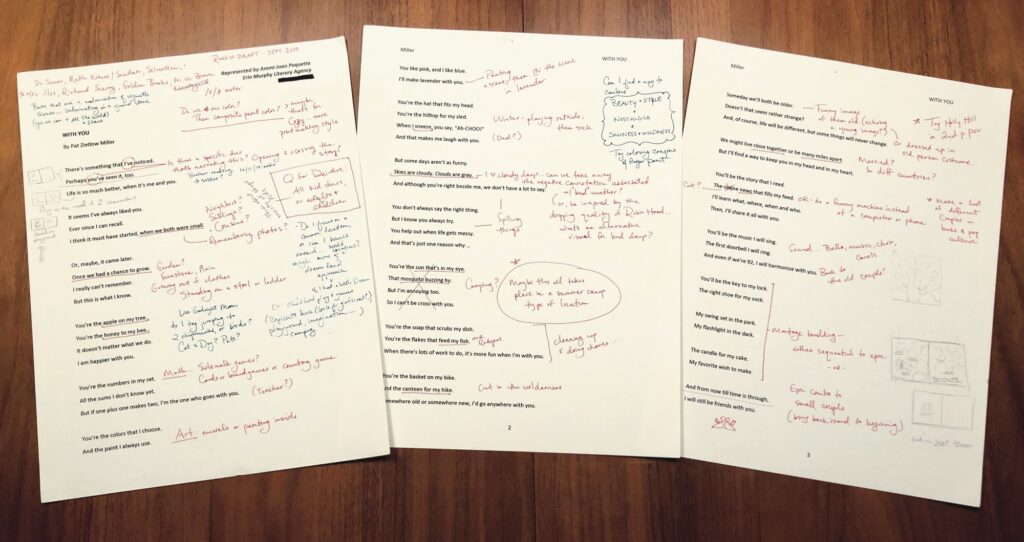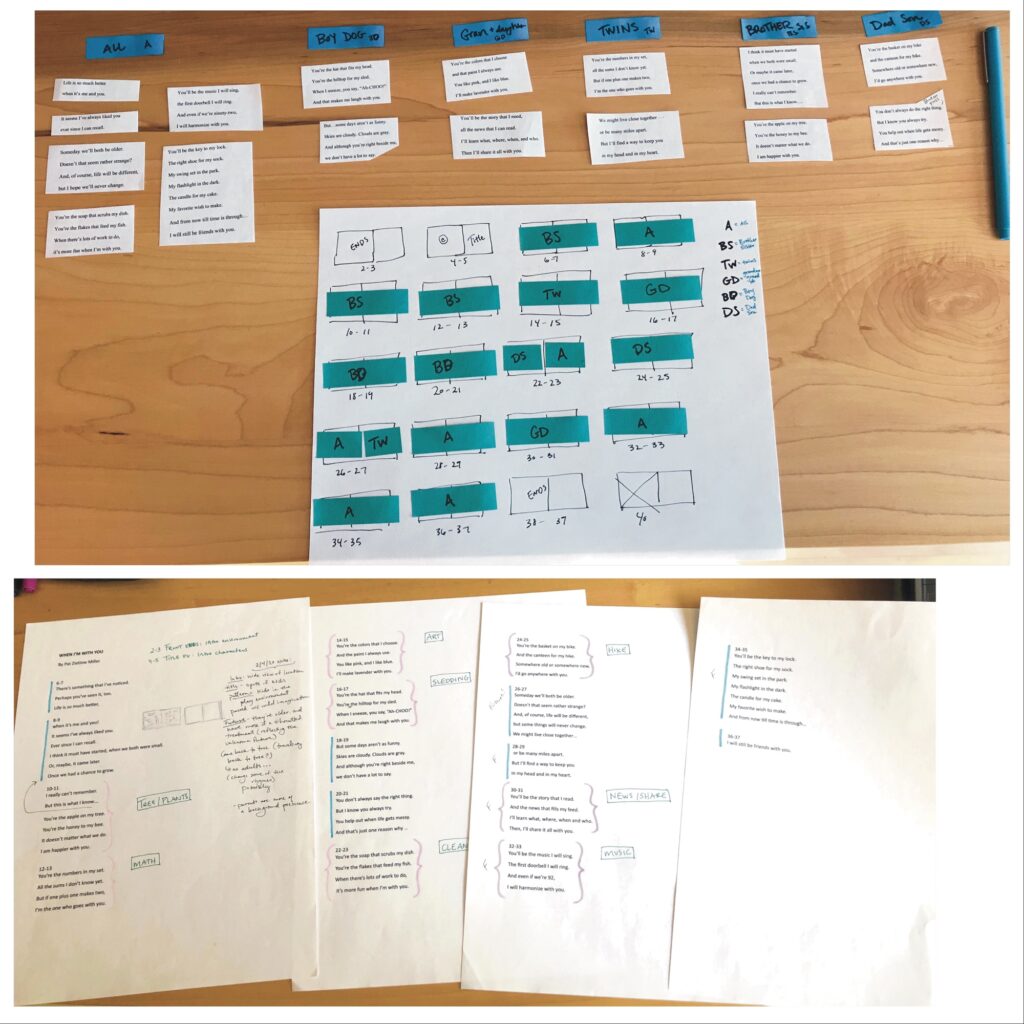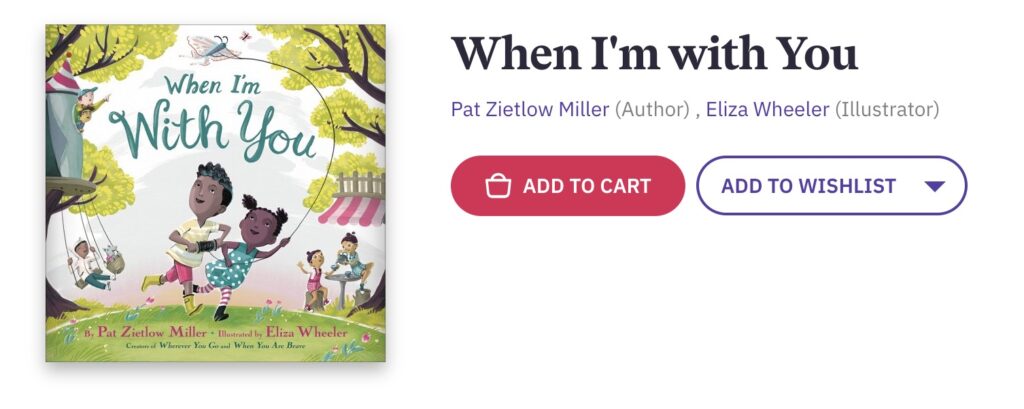For Picture Book Art Creation, Writing is the First Action
When I create art for a book that’s written by another author, I don’t jump into sketching and drawing right away. Even for stories I haven’t written, the process still begins, for me, with writing.

When I’ve taken on a manuscript to illustrate, the first thing I do is print it out, get in a cozy and undistracted place, and read through the story as I would a finished picture book. In my first and freshest reading, I want to capture all notes that come to mind in a stream of consciousness. You can see in the above image on Pat Zietlow Miller’s manuscript for the book, WHEN I’M WITH YOU, I’m writing all over the spaces on the page, circling words that conjure thoughts or imagery. I’m not trying to figure anything out at this point, just capturing any and all thoughts in the moment of the reading. I’m noting any ideas that excite me, as well as noticing parts that seem tricky or unclear in terms of how they’ll be visually handled.

It’s my job to tackle page turns, to pace the text across 32 pages, and to figure out what the visual story is on each page. I often find it helpful to cut up the manuscript and move groups of text around individually so I can test out different options. This can feel like building a complicated puzzle, especially in the case of Pat’s manuscripts that leave a lot of the visual story up to the illustrator (a particular reason I LOVE illustrating Pat’s stories!). I had previously illustrated two of her other stories—WHEREVER YOU GO and WHEN YOU ARE BRAVE—and both have the same wonderful openness that WHEN I’M WITH YOU does.

Another useful thing is laying out a small blank mockup ”dummy” of the book, and taping the text blocks in to read it out loud with page turns. This can reveal areas that are getting overcrowded, need more ore less space, or where the rhythm might be better served by changing the moment of that page turn. I tend to visualize many more scenes than can fit in a standard 32-page picture book, so I either have to drop scenes out, combine them, or consider whether a different page number might be necessary.
This stage is all work I’m doing for my own sake (for the story’s sake!), but I’m not yet sharing or turning anything in for the editor or art director to see. I’ll go from here to playing around with sketches and ideas for the imagery, which I’ll share in the next post. But for me, these beginning steps are crucial parts of wrapping my brain around a project!

